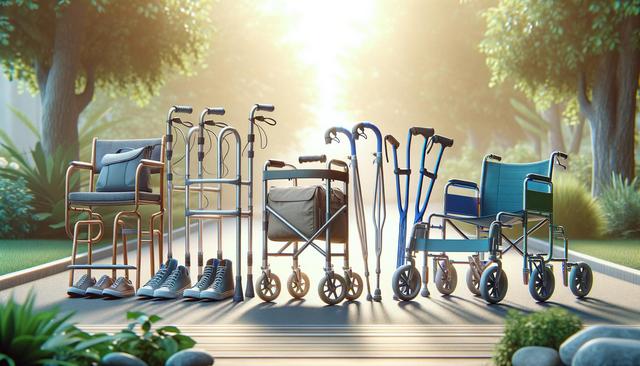Understanding the Need for Walking Aids
Walking aids are essential tools for individuals who experience difficulties with balance, strength, or endurance. Whether due to aging, injury, or a medical condition, the right equipment can provide much-needed support. Walking aids not only improve physical stability but also boost confidence, allowing users to move more freely and safely. They are designed to accommodate a variety of needs, from temporary recovery to long-term support.
Some common reasons people use walking aids include:
- Post-surgical recovery
- Arthritis or joint pain
- Neurological conditions affecting mobility
- Balance disorders
- General age-related mobility issues
Choosing the correct walking aid involves considering individual needs, physical capabilities, and lifestyle factors. Consulting a healthcare professional can also help determine the most suitable option.
Types of Walking Aids Available
There is a wide range of walking aids, each designed to meet specific mobility requirements. The main types include canes, crutches, walkers, and rollators. Each option offers unique benefits and is suited for different levels of support.
Here’s a closer look at the categories:
- Canes: Ideal for those needing minimal support, canes help maintain balance and reduce strain on joints.
- Crutches: Typically used for injury recovery, crutches transfer weight from the legs to the upper body.
- Walkers: Offering substantial support, walkers are excellent for individuals who require more stability.
- Rollators: Similar to walkers but equipped with wheels, rollators provide smoother movement and often come with seats for resting.
Each type of walking aid can have additional features such as adjustable height, ergonomic grips, and foldable designs for convenience.
Choosing the Right Walking Aid
Selecting the most effective walking aid depends on several factors, including the user’s specific condition, physical strength, and environment. It is important to assess the level of support needed and the primary purpose of the aid, whether for short walks, all-day use, or navigating different terrains.
Important considerations include:
- Mobility level: Assess whether minimal balance assistance or full weight-bearing support is required.
- Physical condition: Consider strength, endurance, and any upper body limitations.
- Environment: Think about whether the aid will be used indoors, outdoors, or both.
- Portability: Look for lightweight and foldable options if frequent transportation is necessary.
Personal comfort and ease of use are crucial. Testing different models and adjusting them properly can significantly impact the user’s experience.
Maintenance and Safety Tips for Walking Aids
Proper maintenance of walking aids ensures their longevity and reliability. Regular checks and timely repairs help prevent accidents and maintain optimal functionality. Safety is paramount when using any mobility device, and a few simple practices can make a big difference.
Maintenance tips include:
- Inspecting rubber tips or wheels for wear and replacing them as needed.
- Checking the frame for any cracks or weaknesses.
- Ensuring that all adjustable parts are securely locked in place.
- Cleaning the device regularly to remove dirt and debris.
In terms of safety, users should:
- Always use the walking aid as instructed.
- Adjust the height properly to maintain good posture.
- Be cautious on wet or uneven surfaces.
- Wear appropriate footwear to enhance stability.
Taking these preventive measures can significantly enhance the safety and effectiveness of walking aids.
Accessories and Enhancements for Walking Aids
Many walking aids can be customized with accessories to better meet individual needs. These enhancements can improve comfort, convenience, and safety, making daily activities easier and more enjoyable.
Popular accessories include:
- Storage bags or baskets: Useful for carrying personal items hands-free.
- Lights and reflectors: Enhance visibility when walking in low-light conditions.
- Cushioned grips: Provide extra comfort during extended use.
- Ice tips or all-terrain attachments: Improve traction on slippery or uneven surfaces.
Customizing a walking aid with suitable accessories can address specific challenges and allow for greater independence. It is advisable to choose enhancements that are compatible with the device and recommended by mobility specialists.
Conclusion: Empowering Mobility with the Right Support
Choosing the right walking aid equipment is a vital step toward maintaining independence and improving quality of life. With various options available, individuals can find a solution tailored to their specific needs and lifestyle. By understanding the types of aids, assessing personal requirements, maintaining the equipment, and considering helpful accessories, users can enhance both their safety and confidence. Walking aids are more than tools; they are enablers of freedom and active living.


